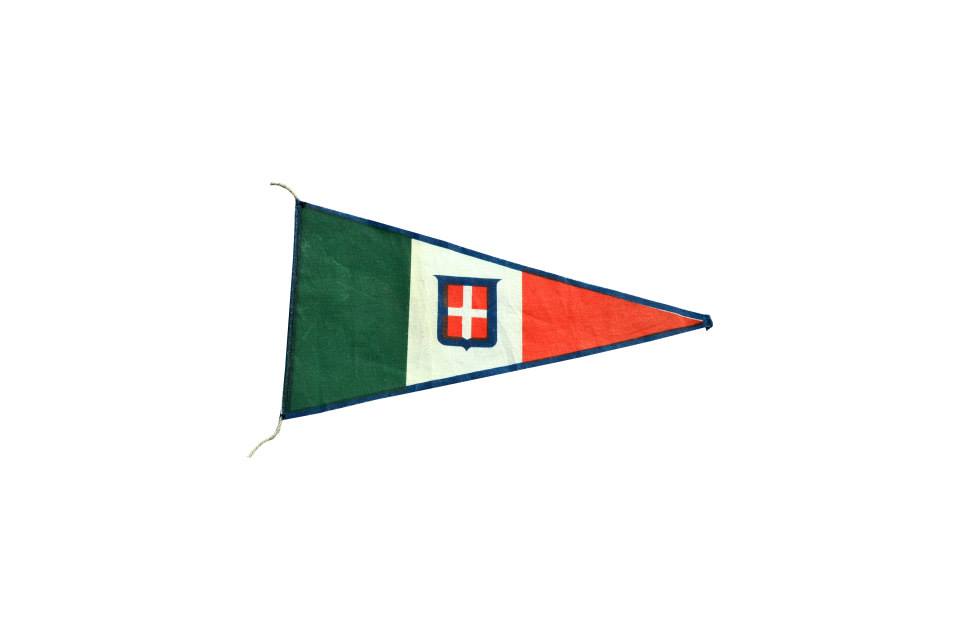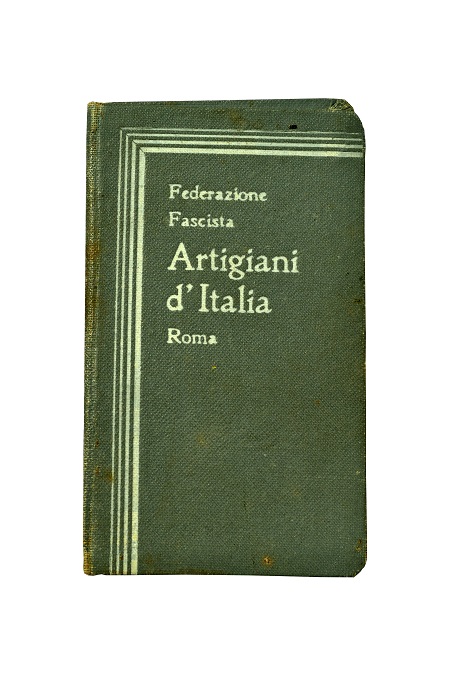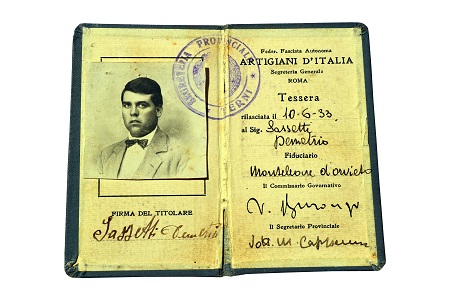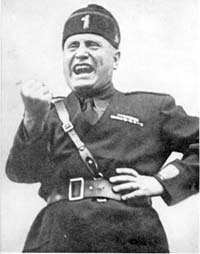
Pennant or part of a piece of propaganda bunting representing the national flag of the Kingdom of Italy which was used up until 1943.
Italy was a monarchy, which, while part of the Triple Alliance in 1914, managed to avoid being drawn into the conflict on the side of their allies of the central powers, preferring to eventually join the carnage on the opposite (and by this time, clearly going to be the winning) side. Because of this, they managed to retain their established order after the conflict.

Italian Fascist Party membership card
Benito Mussolini was thrown out of the Italian communists in 1914; undeterred, he formed his own movement, the Fasci di Combattimento, or Combat League, in 1919. Initially, the movement was based on principles more associated with those of the left and was joined by a mix of disillusioned former soldiers who felt the isolationist and pacifist policies of the post-war regime were crippling the potential of this still relatively new nation. In short, these views would snatch the victory of war and transform it into the defeat of peace. In 1922 the League was elected into power.
Mussolini speaking at a party rally.
Because of the possible restrictions that a monarchy placed on Mussolini, along with his original communist leanings, the Italian Fascists were relatively less extreme than their Nazi comrades. This said, it should be not be dismissed as a benign movement. Mussolini was obsessed with restoring the glories to which he felt the Italian race were the heirs, namely those of ancient Rome. This manifested itself in the desire for their own re-created modern Empire and much of the imagery employed was borrowed from the Romans. Militarily, it is safe to say that, while in WW1 the Italians had fought every bit as hard as any other nation, after this conflict, the Italian armed forces failed to fully embrace the rapid technological and tactical advances made by many other nations and the military reverses suffered during WW2 were directly attributable to these factors. The lust for power and conquest is what ultimately brought the nation into WW2.
For information on the Italian Imperial ambitions, click here.
 Above, Italian Nationalist armband.
Above, Italian Nationalist armband.For the Italian Fascist anthem. click here
To return to the main cabinet listing, click here.
